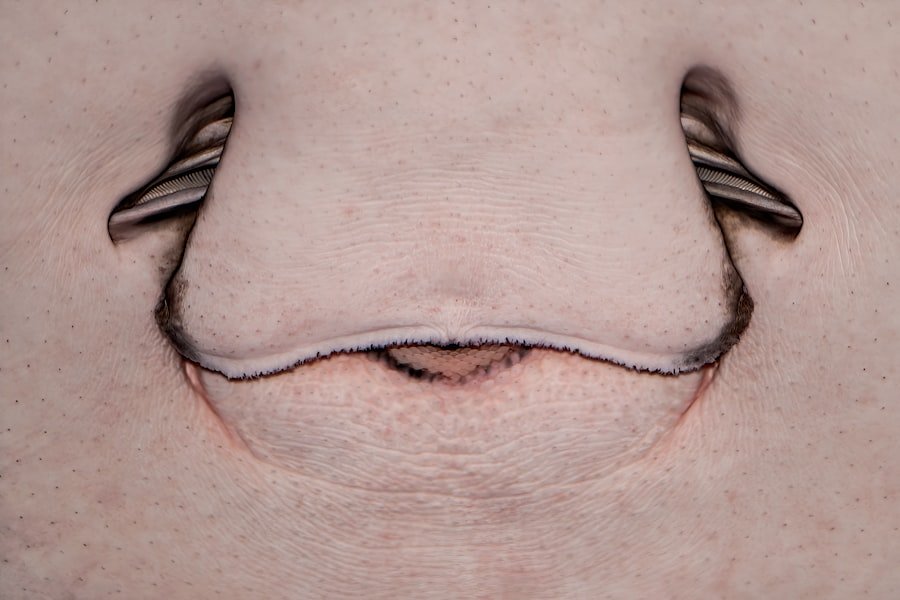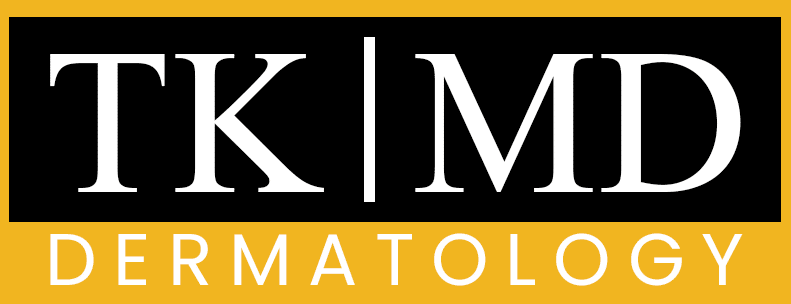Chin pimples, often a source of frustration for many, can arise from a variety of factors. One of the primary culprits is hormonal fluctuations, which can lead to increased oil production in the skin. This is particularly common during puberty, menstruation, or periods of significant stress.
Hormones such as androgens can stimulate sebaceous glands, resulting in an overproduction of sebum. When this excess oil combines with dead skin cells and bacteria, it can clog pores, leading to the formation of pimples. Understanding this hormonal connection is crucial for those who frequently experience breakouts in the chin area.
Another significant factor contributing to chin pimples is the use of certain skincare and cosmetic products. Many individuals may unknowingly apply products that are comedogenic, meaning they can clog pores. Heavy foundations, oily moisturizers, and certain sunscreens can exacerbate the problem, particularly if they are not suited for one’s skin type.
Additionally, touching the face frequently or resting the chin on hands can transfer bacteria and oils from the hands to the skin, further increasing the likelihood of breakouts.
Identifying these triggers is essential for anyone looking to manage and prevent chin pimples effectively.
Key Takeaways
- Hormonal changes, stress, and poor hygiene can cause chin pimples
- Cleanse, exfoliate, and moisturize regularly to prevent chin pimples
- Use spot treatments with salicylic acid or benzoyl peroxide to treat existing chin pimples
- Avoid dairy, sugary foods, and touching your face to manage chin pimples
- Do not pick or squeeze chin pimples to avoid aggravating them
- Professional treatments like chemical peels or laser therapy can help with chin pimples
- Tea tree oil and aloe vera can be effective natural remedies for chin pimples
- Seek medical advice if chin pimples persist despite proper skincare and lifestyle changes
Proper skincare routine for preventing chin pimples
Establishing a proper skincare routine is fundamental in preventing chin pimples. A balanced regimen typically begins with a gentle cleanser that effectively removes dirt, oil, and makeup without stripping the skin of its natural moisture. Look for cleansers containing salicylic acid or benzoyl peroxide, as these ingredients can help unclog pores and reduce inflammation.
Cleansing twice daily—once in the morning and once before bed—ensures that the skin remains free from impurities that could lead to breakouts. Following cleansing, it is vital to incorporate a suitable toner and moisturizer into the routine. Toners can help balance the skin’s pH levels and remove any residual impurities left after cleansing.
Opt for alcohol-free toners with soothing ingredients like witch hazel or rose water to avoid irritation. Moisturizing is equally important; even oily skin needs hydration. Lightweight, non-comedogenic moisturizers that contain hyaluronic acid or glycerin can provide necessary moisture without contributing to excess oil production.
This balanced approach helps maintain skin health and reduces the likelihood of developing chin pimples.
Tips for treating existing chin pimples

When it comes to treating existing chin pimples, patience and care are essential. One effective method is to apply topical treatments containing active ingredients such as benzoyl peroxide or salicylic acid directly onto the affected area. These ingredients work by targeting the bacteria that cause acne and promoting cell turnover, which helps clear clogged pores.
It’s important to apply these treatments sparingly and only on the pimple itself to avoid irritating surrounding skin. In addition to topical treatments, adopting a few lifestyle changes can significantly aid in managing existing breakouts. For instance, avoiding picking or squeezing pimples is crucial; this can lead to scarring and further inflammation.
Instead, consider using ice wrapped in a cloth to reduce swelling and redness temporarily. Furthermore, incorporating a consistent exfoliation routine—using gentle exfoliants like alpha-hydroxy acids (AHAs) or beta-hydroxy acids (BHAs)—can help remove dead skin cells and prevent future breakouts by keeping pores clear.
The role of diet and lifestyle in chin pimple management
| Factors | Impact on Chin Pimples |
|---|---|
| Diet high in sugar and processed foods | May exacerbate chin pimples due to increased inflammation |
| Low glycemic index foods | Can help reduce chin pimples by stabilizing blood sugar levels |
| Hydration | Proper hydration can help maintain skin health and reduce chin pimples |
| Regular exercise | Can improve circulation and reduce stress, which may help manage chin pimples |
| Stress management | High stress levels can contribute to chin pimples, so stress reduction techniques may be beneficial |
Diet plays a pivotal role in skin health and can significantly influence the occurrence of chin pimples. Foods high in refined sugars and dairy products have been linked to increased acne severity in some individuals. For example, studies suggest that high glycemic index foods can lead to spikes in insulin levels, which may trigger hormonal changes that promote acne development.
Conversely, incorporating a diet rich in whole foods—such as fruits, vegetables, whole grains, and lean proteins—can provide essential nutrients that support skin health. Lifestyle factors also contribute to the management of chin pimples. Stress management techniques such as yoga, meditation, or regular exercise can help regulate hormone levels and reduce stress-induced breakouts.
Additionally, ensuring adequate hydration by drinking plenty of water throughout the day can help maintain skin elasticity and overall health. Sleep is another critical factor; lack of sleep can lead to increased cortisol levels, which may exacerbate acne. Prioritizing restful sleep not only benefits overall well-being but also supports clearer skin.
How to avoid aggravating chin pimples
Preventing aggravation of existing chin pimples requires mindful habits and awareness of one’s environment. One common mistake is using harsh scrubs or exfoliants that can irritate the skin further. Instead of aggressive scrubbing, opt for gentle exfoliation methods that promote cell turnover without causing inflammation.
Chemical exfoliants like AHAs or BHAs are often more effective and less irritating than physical scrubs. Another critical aspect is being cautious with hair products. Hair gels, oils, or sprays can inadvertently come into contact with the chin area, leading to clogged pores and breakouts.
To mitigate this risk, consider tying hair back during skincare routines or using products labeled as non-comedogenic. Additionally, maintaining clean pillowcases and towels is essential; these fabrics can harbor bacteria and oils that contribute to acne flare-ups if not washed regularly.
The benefits of professional treatments for chin pimples

For those struggling with persistent chin pimples despite at-home care, professional treatments may offer effective solutions. Dermatologists can provide tailored advice and treatments based on individual skin types and concerns. Options such as chemical peels can help exfoliate the skin more deeply than at-home products, removing dead skin cells and unclogging pores effectively.
Another professional treatment option is laser therapy, which targets acne-causing bacteria while reducing inflammation and promoting healing in the skin. This method can be particularly beneficial for individuals with severe acne or scarring from previous breakouts. Additionally, dermatologists may prescribe topical or oral medications that contain stronger active ingredients than those available over-the-counter, providing a more aggressive approach to managing stubborn chin pimples.
Natural remedies for treating chin pimples
Natural remedies have gained popularity among those seeking alternative treatments for chin pimples. Tea tree oil is one such remedy known for its antibacterial properties; applying diluted tea tree oil directly to affected areas may help reduce inflammation and kill acne-causing bacteria. Another effective natural treatment is honey, which possesses both antibacterial and anti-inflammatory properties.
Applying raw honey as a mask for 10-15 minutes before rinsing off can soothe irritated skin while promoting healing. Aloe vera is another versatile natural remedy that can be beneficial for treating chin pimples. Its soothing properties help calm inflamed skin while providing hydration without clogging pores.
Applying fresh aloe vera gel directly from the plant onto affected areas can promote healing and reduce redness. While these natural remedies may not work for everyone, they offer gentle alternatives for those looking to manage their chin pimples without harsh chemicals.
When to seek medical advice for persistent chin pimples
While many individuals experience occasional chin pimples that respond well to home treatments, there are instances when medical advice becomes necessary. If breakouts persist despite consistent skincare routines or over-the-counter treatments, it may be time to consult a dermatologist.
Persistent acne can indicate underlying hormonal imbalances or other skin conditions that require professional evaluation.
Additionally, if chin pimples are accompanied by severe pain, swelling, or signs of infection—such as pus or fever—immediate medical attention is warranted. These symptoms could indicate a more serious issue that requires prompt treatment to prevent complications. Seeking professional guidance ensures that individuals receive appropriate care tailored to their specific needs, ultimately leading to healthier skin and improved confidence in one’s appearance.
If you are struggling with pimples on your chin, you may want to consider visiting Dr. Trisha Khanna’s website for expert advice on skincare. In addition to treating pimples, Dr. Khanna also specializes in cosmetic dermatology and surgery, offering a range of treatments to help you achieve clear, healthy skin. For more information on skincare and hair loss treatments, check out her article on the best hair loss treatment for females.
FAQs
What causes pimples on the chin?
Pimples on the chin can be caused by a variety of factors, including hormonal changes, stress, poor skincare habits, and certain medications. Hormonal fluctuations, especially during puberty, menstruation, pregnancy, and menopause, can lead to increased oil production and clogged pores, resulting in pimples.
How can I prevent pimples on my chin?
To prevent pimples on the chin, it’s important to maintain a consistent skincare routine that includes gentle cleansing, exfoliation, and moisturizing. Avoid touching your face with dirty hands, and try to manage stress levels through relaxation techniques or exercise. Additionally, consider using non-comedogenic skincare products and avoiding foods that may trigger breakouts.
What are the best treatments for pimples on the chin?
Treatment options for pimples on the chin include over-the-counter topical treatments containing ingredients like benzoyl peroxide or salicylic acid. In more severe cases, a dermatologist may prescribe oral medications or topical retinoids. It’s important to avoid picking or popping pimples, as this can lead to scarring and further inflammation.
When should I see a dermatologist for pimples on my chin?
If over-the-counter treatments are not effective in managing pimples on the chin, or if the pimples are severe and causing discomfort, it’s advisable to seek the advice of a dermatologist. Additionally, if pimples are accompanied by other symptoms such as fever, swelling, or severe pain, it’s important to consult a healthcare professional for proper evaluation and treatment.


